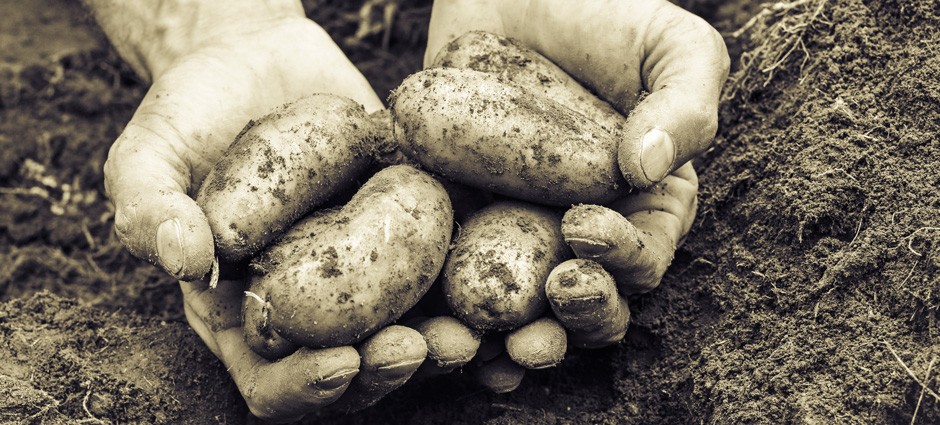Potatoes by the Pound
- The largest potato recorded in the Guinness Book of Records is an 8lb. 4 oz. (3.8 kg) spud grown by a gardener in Hallam, near Nottinghamshire in the UK. A news headline from 2008 (with picture) credits a Lebanese farmer with growing a stupendous spud. It weighed in at a whopping 24.9 lbs. (11.3 kg), but has yet to be investigated by Guinness.
- If you think it’s difficult deciding which potatoes to buy when you peruse the many choices at your local grocery store, imagine keeping track of every kind there is. At last count, there are 5,000 varieties of potato preserved at the International Potato Center in Peru.
- The Idaho Potato Museum in Blackfoot, ID is home to the largest potato crisp. Made by a group of food engineers, the crisp, listed in the Guinness Book of Records, measures 23” x 14.5”, weighs 5.4 oz., and is estimated to be 920 calories of crunchy goodness.
Potato Propaganda
- Potatoes were not adopted by European farmers easily. During the 1700s, British farmers associated potatoes with Irish peasants (despised during this time) and the encroachment of Catholicism. The slogan chanted through the streets: “No Potatoes, No Popery!”
- As the story goes, Marie Antoinette was quite taken by the beautiful purple potato plant blossoms so she started wearing them in her hair. She encouraged Louis XVI to adorn himself with the star-shaped flowers to encourage potato cultivation among the people who were resistant to the strange new vegetable.
- The humble tuber was the sole subject of the 1664 treatise, England’s Happiness Increased, penned by John Forster. The treatise encouraged King Charles II to import seed potatoes from Ireland to protect against famine. Forster believed potatoes were the answer for “ten thousand men in England and Wales, who knew not how to live, or what to do to get a maintenance for their families.”
Thinking Outside the Kitchen
There are so many ways to use potatoes! Here’s a list of tuber tricks to try:
- Ditch the cucumber slices and use raw potato slices to reduce puffiness under the eyes.
- For a non-toxic rust remover cut a potato in half, dip it into a bit of baking soda, and scrub away rust from cast iron, pans, or garden tools.
- For an excellent spud scrub to remove carrot, beet, or berry juice stains, rub hands with the cut side of a potato.
- The next time you make mashed potatoes don’t throw out that potato water. Throw in a pile of tarnished silverware, soak for an hour, rinse and dry. Shiny!
- One potato lover had this bright idea: gently press the cut, dried side of a potato half onto the remaining glass shards of a broken lightbulb. Slowly turn (lefty-loosey) to remove from the socket. (Make sure the light or lamp is turned off first.)


